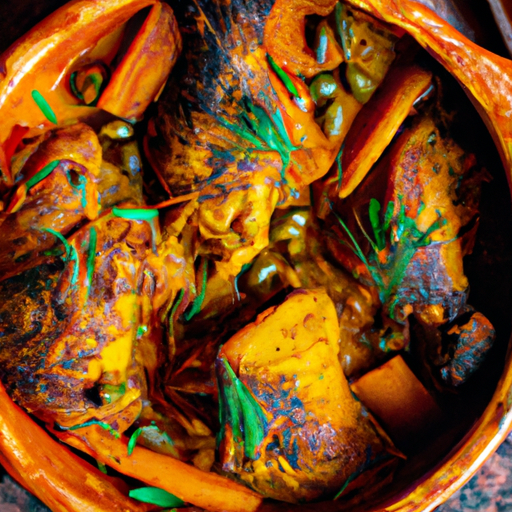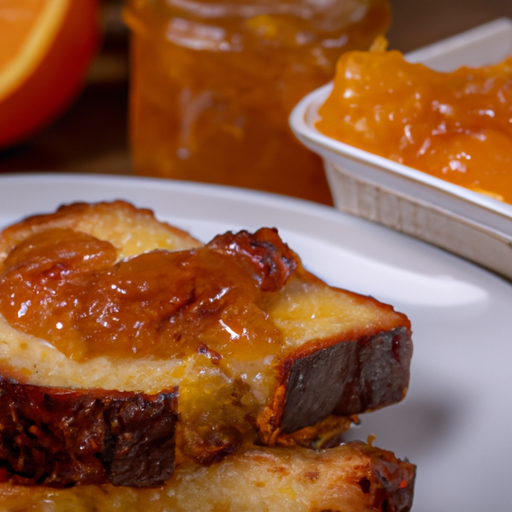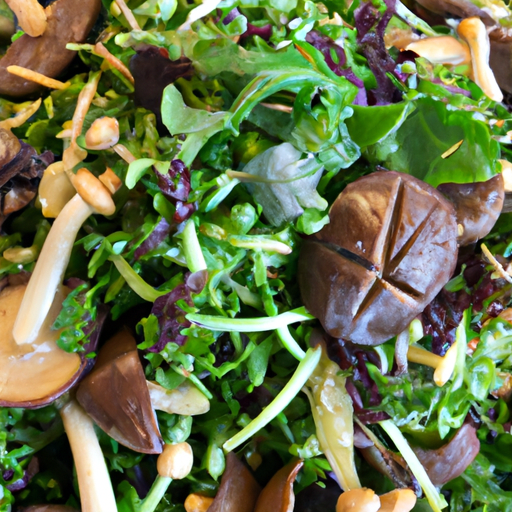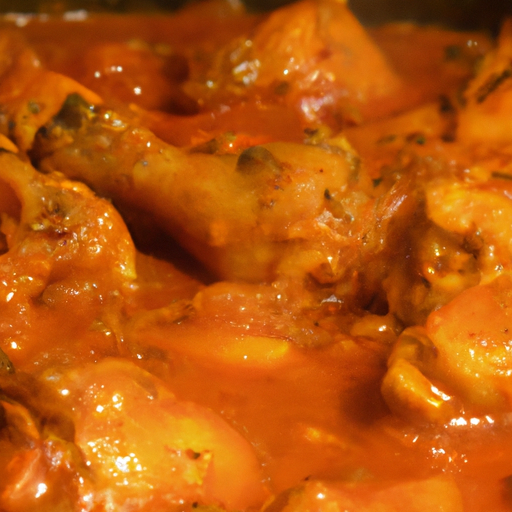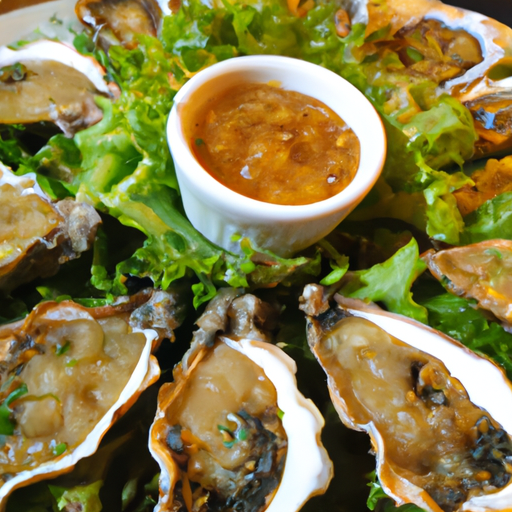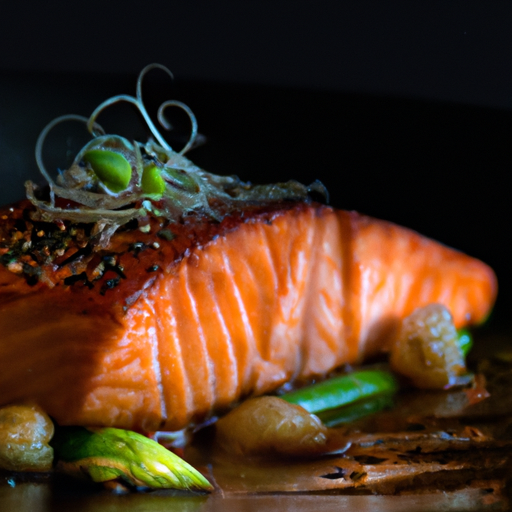Chicken and Butternut Squash Tagine
This overview focuses on the chicken and butternut squash tagine, a dish that comes from North Africa. It is celebrated for its unique combination of flavors and aromatic spices.
We will explore the history and origins of the tagine, as well as detailing the necessary ingredients and instructions for preparation. Hopefully, readers will gain a comprehensive understanding of how to create this flavorful meal.
Moreover, cooking tips specific to tagine recipes will be offered to ensure optimal results.
History and Origins
The history and origins of chicken and butternut squash tagine can be traced back to North African cuisine, specifically Morocco. Tagine is a traditional dish that takes its name from the earthenware pot in which it is cooked. The word ‘tagine’ also refers to the slow-cooked stew itself, which has been prepared for centuries in Moroccan households and has gained popularity worldwide in recent years.
This flavorful dish combines tender chicken, sweet butternut squash, aromatic spices such as cumin, coriander, ginger, and cinnamon, along with dried fruits like apricots or raisins, creating a harmonious blend of flavors. The slow cooking process allows the ingredients to meld together, resulting in a rich and fragrant dish that is both comforting and satisfying.
Chicken and butternut squash tagine embodies the essence of Moroccan cuisine with its vibrant flavors and unique cooking technique.
Ingredients Chicken and Butternut Squash Tagine
Ingredients:
- 2 tablespoons olive oil
- 1 onion, diced
- 2 cloves garlic, minced
- 2 teaspoons minced fresh ginger
- 2 teaspoons ground cumin
- 2 teaspoons ground coriander
- 1 teaspoon ground turmeric
- 1/2 teaspoon ground cinnamon
- Salt and freshly ground black pepper, to taste
- 2 cups chicken broth
- 2 cups diced butternut squash
- 1 pound boneless, skinless chicken thighs, cut into 1-inch cubes
- 1 can (14.5 ounces) diced tomatoes
- 1/4 cup chopped fresh cilantro, plus more for garnish
- 2 tablespoons honey
- Juice of 1 lemon
Instructions
To prepare this dish, start by cutting the poultry and winter squash into small pieces.
Heat some oil in a large pot over medium heat, then add the chopped onion and garlic. Sauté until they are soft and translucent.
Add the chopped chicken to the pot and cook until it is browned on all sides.
After that, add spices such as cumin, coriander, ginger, cinnamon, paprika, and turmeric to the pot. Stir well to coat the chicken with the aromatic flavors.
Next, add the chopped butternut squash along with some chicken broth or water.
Cover the pot and let it simmer for about 30-40 minutes until both the chicken and squash are tender.
Cooking Tips for Tagine Recipes
Cooking tips for tagine recipes include adjusting the cooking time based on the tenderness of the ingredients and using a combination of spices to enhance the flavors. Tagine dishes are renowned for their slow-cooking method, which enables the flavors to blend together and generate a sumptuous, aromatic dish. To guarantee that your tagine turns out perfectly every time, it is essential to take into account the tenderness of the ingredients. For instance, when using chicken in your tagine, you may need to cook it for a longer period than if you were using vegetables or fish. Additionally, combining various spices such as cumin, coriander, turmeric, and cinnamon can elevate the flavors of your tagine. The table below provides some suggestions for spice combinations that work well with different types of tagines.
| Type of Tagine | Spice Combination |
|---|---|
| Chicken | Ginger, cumin, paprika |
| Lamb | Cinnamon, ginger, saffron |
| Vegetarian | Turmeric, coriander |
| Seafood | Lemon zest, garlic |
Final Thoughts
At the end, the slow-cooking process and judicious selection of spices are the key to the rich and aromatic flavors of tagine recipes.
Known for its complex and layered flavors, tagine is created through a combination of cooking techniques and ingredients. Slow-cooking allows the flavors to develop slowly, resulting in tender meat and perfectly cooked vegetables.
Furthermore, spices such as cumin, coriander, ginger, and cinnamon add depth and warmth to the dish. These spices not just boost the taste but also make an enticing aroma that fills the kitchen while the tagine is cooking.
Additionally, the selection of ingredients is essential in creating a balanced flavor profile. Ingredients like chicken thighs bring richness to the dish, while butternut squash adds sweetness and texture.
All in all, tagine dishes offer a delightful culinary experience through their harmonious blend of flavors.
Frequently Asked Questions
Can I Substitute the Butternut Squash With Other Types of Squash in This Tagine Recipe?
Substituting butternut squash with other types of squash in the tagine recipe is possible. However, it may result in a different flavor and texture profile due to variations in sweetness and firmness among different types of squash.
What Is the Recommended Cooking Time for the Chicken in This Tagine Recipe?
The recommended cooking time for the chicken in the tagine recipe can vary depending on factors such as the size and thickness of the chicken pieces. It is generally advised to cook until the chicken reaches an internal temperature of 165°F (74°C) to ensure it is fully cooked.
Can I Use Boneless Chicken Thighs Instead of Bone-In Chicken for This Recipe?
Boneless chicken thighs can be used instead of bone-in chicken in the recipe. However, it is important to adjust the cooking time as boneless meat tends to cook faster than bone-in meat.
Are There Any Alternative Spices That Can Be Used in This Tagine Recipe?
Alternative spices that can be used in a tagine recipe depend on personal preference and desired flavor profile. Common options include cumin, coriander, turmeric, ginger, paprika, cinnamon, and saffron. Experimentation is encouraged to achieve desired taste.
Can I Prepare This Tagine Recipe in a Regular Pot if I Don’t Have a Tagine Dish?
Using a regular pot instead of a tagine dish to prepare the tagine recipe is possible. However, it may affect the final taste and texture of the dish. Adjustments in cooking times and heat distribution might be required for optimal results.
